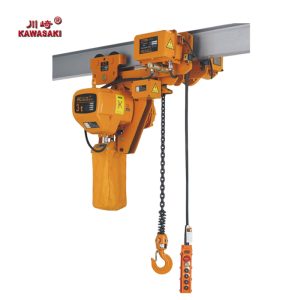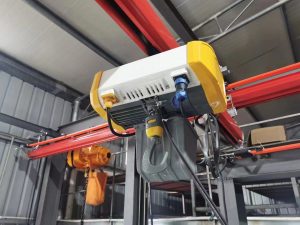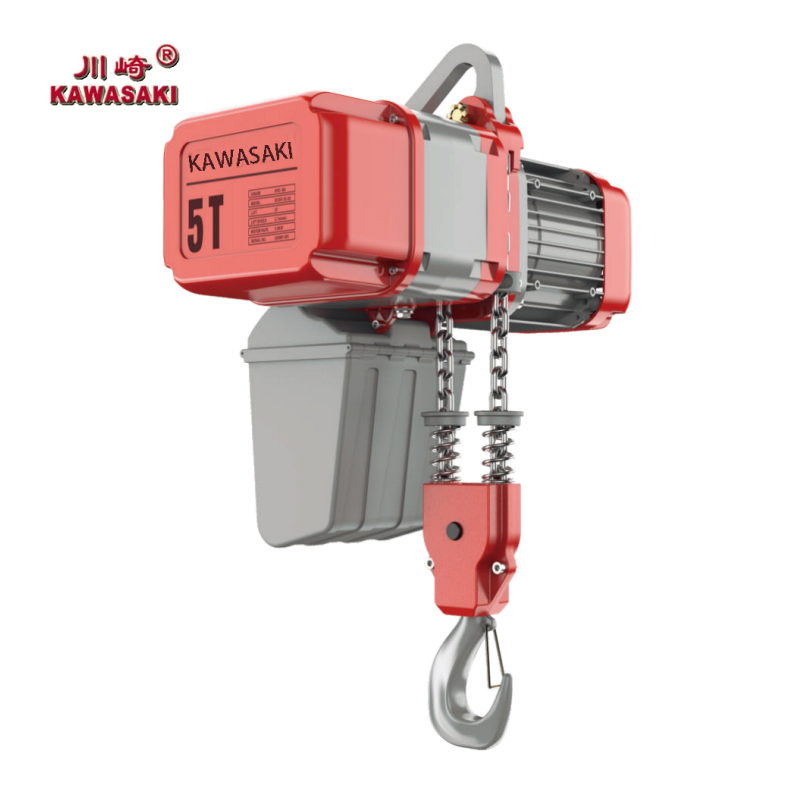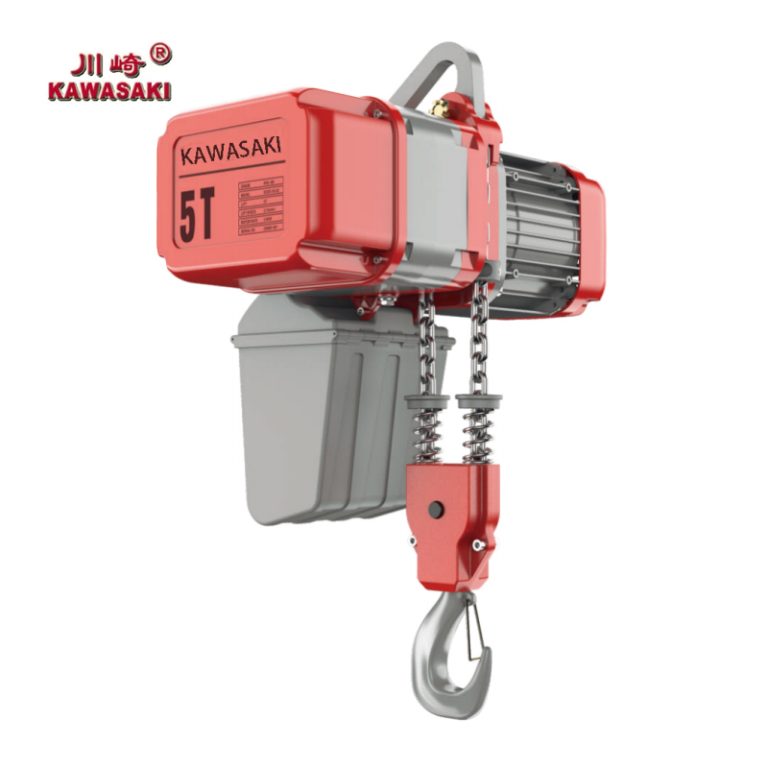Electric hoists are indispensable tools used in a variety of industries for lifting, lowering, and handling heavy loads with ease and efficiency. Unlike manual hoists, which require human labor and effort, electric hoists are powered by electricity and can perform tasks with much greater speed and accuracy. However, like any other technology, electric hoists have both advantages and disadvantages that should be considered before deciding to implement them in a given workplace. In this essay, we will explore the key benefits and drawbacks of electric hoists in detail.
Advantages of Electric Hoists
1. Increased Efficiency and Productivity
One of the most significant advantages of electric hoists is their ability to greatly increase efficiency and productivity in the workplace. The electric motor provides continuous and reliable lifting power without the need for manual effort, allowing workers to move heavier loads more quickly and with less fatigue. This increased speed of operation not only enhances the overall productivity of a workplace but also reduces the time it takes to complete tasks that require lifting, thereby improving workflow and reducing downtime.
2. Safety
Safety is a critical consideration in any lifting operation, and electric hoists offer several features that enhance worker safety. First, they reduce the need for manual handling of heavy loads, which can cause strain injuries, accidents, or fatigue in workers. By automating the lifting process, electric hoists minimize human involvement in potentially dangerous operations, leading to fewer workplace injuries.
Many electric hoists are also equipped with built-in safety features such as overload protection, emergency stop buttons, and limit switches. These features help prevent accidents related to overloading, mechanical failure, or improper handling, ensuring that workers remain protected during lifting tasks.
3. Versatility
Electric hoists are versatile and can be used in a wide range of applications across different industries. They can lift loads of varying sizes and weights, depending on the specifications of the hoist, and can be easily adapted for use in different settings, such as factories, construction sites, warehouses, and even in marine environments. The ability to adjust the lifting height, along with features like variable speed control, makes them ideal for use in both light-duty and heavy-duty applications.
Furthermore, electric hoists come in different configurations, such as single-phase and three-phase electric models, allowing businesses to select the one that best suits their operational needs. They can also be used with different lifting mechanisms, such as wire ropes or chains, which can be tailored to specific tasks.
4. Reduced Labor Costs
While electric hoists do require an upfront investment in equipment, they can ultimately reduce labor costs in the long run. The automation of the lifting process reduces the number of workers needed for manual lifting tasks, allowing companies to allocate their human resources to other areas that require specialized skills. Additionally, because electric hoists can handle more weight than a human worker, fewer employees are needed to move heavy loads, which can result in significant savings in terms of wages.
Moreover, the increased speed of operation reduces the time it takes to perform tasks, which further contributes to labor cost savings. As a result, businesses can achieve higher throughput with fewer workers, optimizing labor allocation and improving overall efficiency.
5. Ease of Operation
Electric hoists are generally very easy to operate. Many models feature user-friendly controls, such as push-button or pendant controls, which allow operators to control the lifting and lowering of loads with precision. The ease of operation makes them accessible even to operators with minimal training or experience, which reduces the need for extensive employee training programs and helps ensure quick adoption of the technology.
Additionally, electric hoists often feature smooth and quiet operation, reducing the noise level in the workplace and creating a more comfortable working environment. This can be especially important in settings where workers are exposed to high levels of noise or vibrations for long periods.
6. Reduced Wear and Tear
The electric motor that powers the hoist generally experiences less wear and tear than manual hoist systems, especially in demanding lifting applications. With proper maintenance, electric hoists can have a longer lifespan than their manual counterparts. The automatic nature of electric hoists means fewer moving parts are subject to constant human manipulation, resulting in less physical wear and tear over time. The durability of electric hoists also helps reduce the frequency of maintenance and repair, saving both time and money.
7. Precision and Accuracy
Electric hoists offer high precision and accuracy in load handling. They can lift and position loads with great accuracy, which is particularly important in situations where precise placement is required. This is especially beneficial in industries like construction, manufacturing, and logistics, where precise lifting and placement are often critical to the overall success of operations.
Some electric hoists even come with advanced features such as variable speed control, allowing the operator to fine-tune the lifting and lowering speed, which further improves accuracy and helps to prevent accidents or errors during handling.
Disadvantages of Electric Hoists
1. High Initial Cost
One of the primary disadvantages of electric hoists is their high initial cost. Electric hoists require a significant upfront investment in equipment, and the price can vary based on factors such as lifting capacity, brand, and features. In some cases, businesses may need to budget for additional infrastructure, such as electrical wiring or additional rigging systems, to accommodate the hoist.
For small businesses or companies with tight budgets, the high cost of electric hoists can be a significant barrier to entry. Although electric hoists can ultimately reduce labor costs and increase productivity, the initial cost might outweigh the benefits for some businesses in the short term.
2. Dependence on Power Supply
Electric hoists rely on a stable power supply to function. In regions with frequent power outages or unreliable electrical infrastructure, electric hoists may experience downtime or failure during crucial operations. This can lead to delays, decreased productivity, and added operational costs as businesses may need to invest in backup power sources, such as generators, to ensure that lifting tasks continue even during power disruptions.
The need for a continuous power supply can also restrict the mobility of electric hoists, especially in outdoor environments where access to electricity may be limited. In contrast, manual hoists do not have this dependency and can be used anywhere, making them a more flexible option in certain situations.
3. Maintenance and Repair Costs
Although electric hoists require less manual intervention and experience less wear and tear than manual hoists, they are still subject to mechanical breakdowns, particularly if they are overused or improperly maintained. Components such as the electric motor, control systems, and gears can require regular servicing and replacement to maintain optimal functionality.
The maintenance of electric hoists can be more complicated and expensive compared to manual hoists. Businesses may need to hire specialized technicians for repairs or invest in spare parts, which can add to the overall cost of ownership. In the event of a major malfunction, repair costs can be substantial, potentially causing extended downtime and disruption to operations.
4. Limited Portability
Electric hoists, particularly larger models, can be heavy and bulky, making them difficult to transport or move between different work sites. While some portable electric hoists are available, they are typically less powerful than their larger counterparts and may not be suitable for heavy-duty applications. This lack of portability can be a significant disadvantage for businesses that require hoisting solutions in multiple locations, such as construction firms working on different job sites.
Manual hoists, in contrast, tend to be more portable and easier to transport between job sites, providing greater flexibility in certain circumstances.
5. Environmental Impact
Electric hoists, like all electrically powered machinery, have an environmental impact, particularly in terms of energy consumption. While they are generally more energy-efficient than manual systems in terms of lifting capability per unit of power, they still require a consistent supply of electricity, which may come from non-renewable sources, depending on the region.
For businesses aiming to reduce their carbon footprint, the use of electric hoists may not align with their sustainability goals unless the electricity used is sourced from renewable energy. Additionally, the production and disposal of electric hoists and their components can contribute to environmental waste and resource depletion.
6. Training and Skill Requirements
Although electric hoists are generally easy to operate, they still require some level of training to ensure safe and effective use. Operators need to be familiar with the hoist’s controls, safety features, and maintenance requirements. In addition, businesses may need to invest in regular training programs to keep workers updated on best practices for operating the hoist, particularly if the technology is new to the workplace.
Without proper training, the risk of accidents or operational inefficiencies increases, which could undermine the safety and productivity benefits of using an electric hoist.
Conclusion
Electric hoists offer numerous advantages, including increased efficiency, safety, versatility, and reduced labor costs. They are well-suited for industries that require heavy lifting and precise handling of loads, contributing to improved productivity and workflow. However, they also come with notable disadvantages, such as high initial costs, dependence on a reliable power supply, and ongoing maintenance and repair requirements. Businesses must carefully weigh the pros and cons of electric hoists, considering factors such as budget, operational needs, and the specific demands of their industry, before deciding to invest in this technology. By understanding both the advantages and drawbacks, businesses can make informed decisions and maximize the benefits of electric hoists in their operations.


